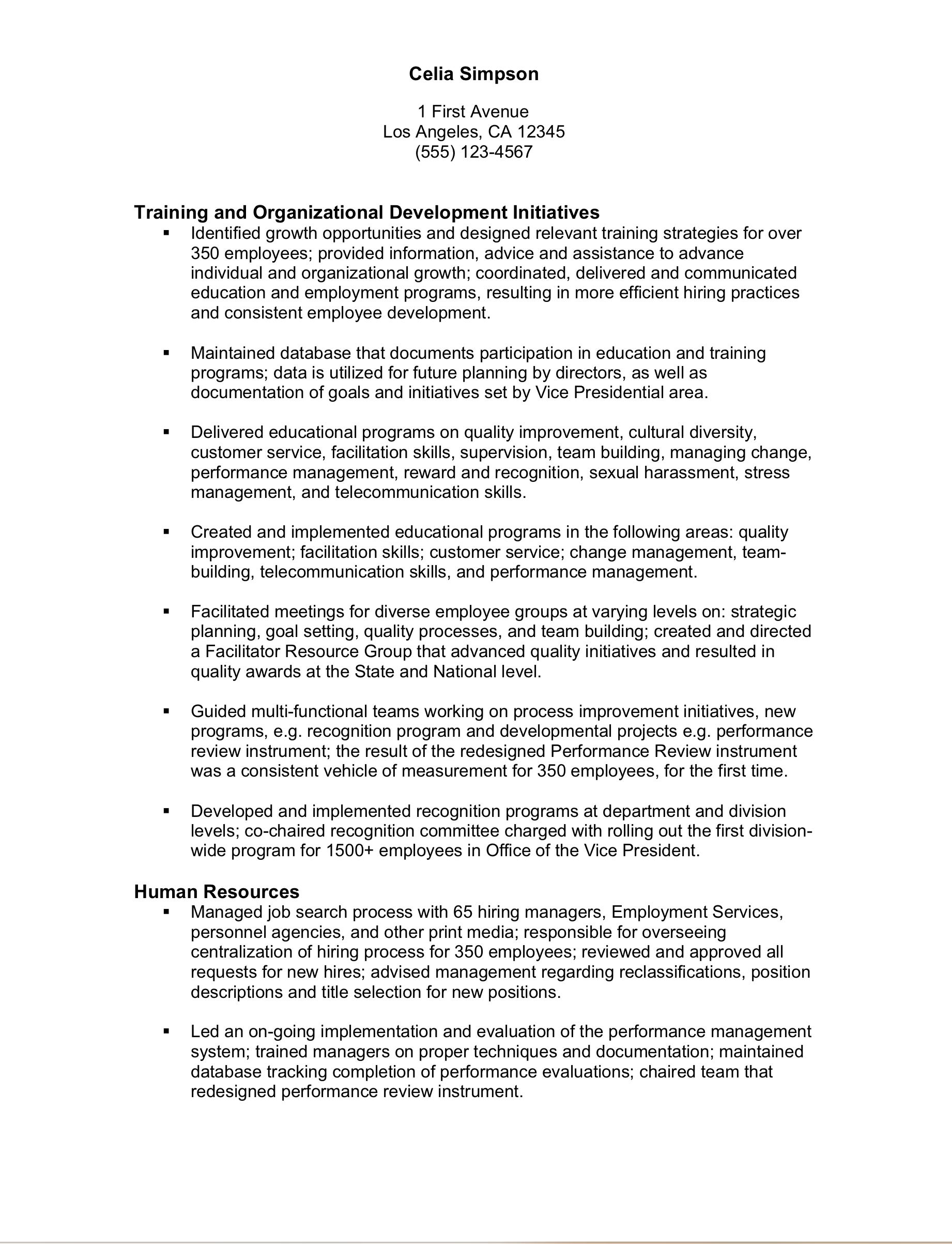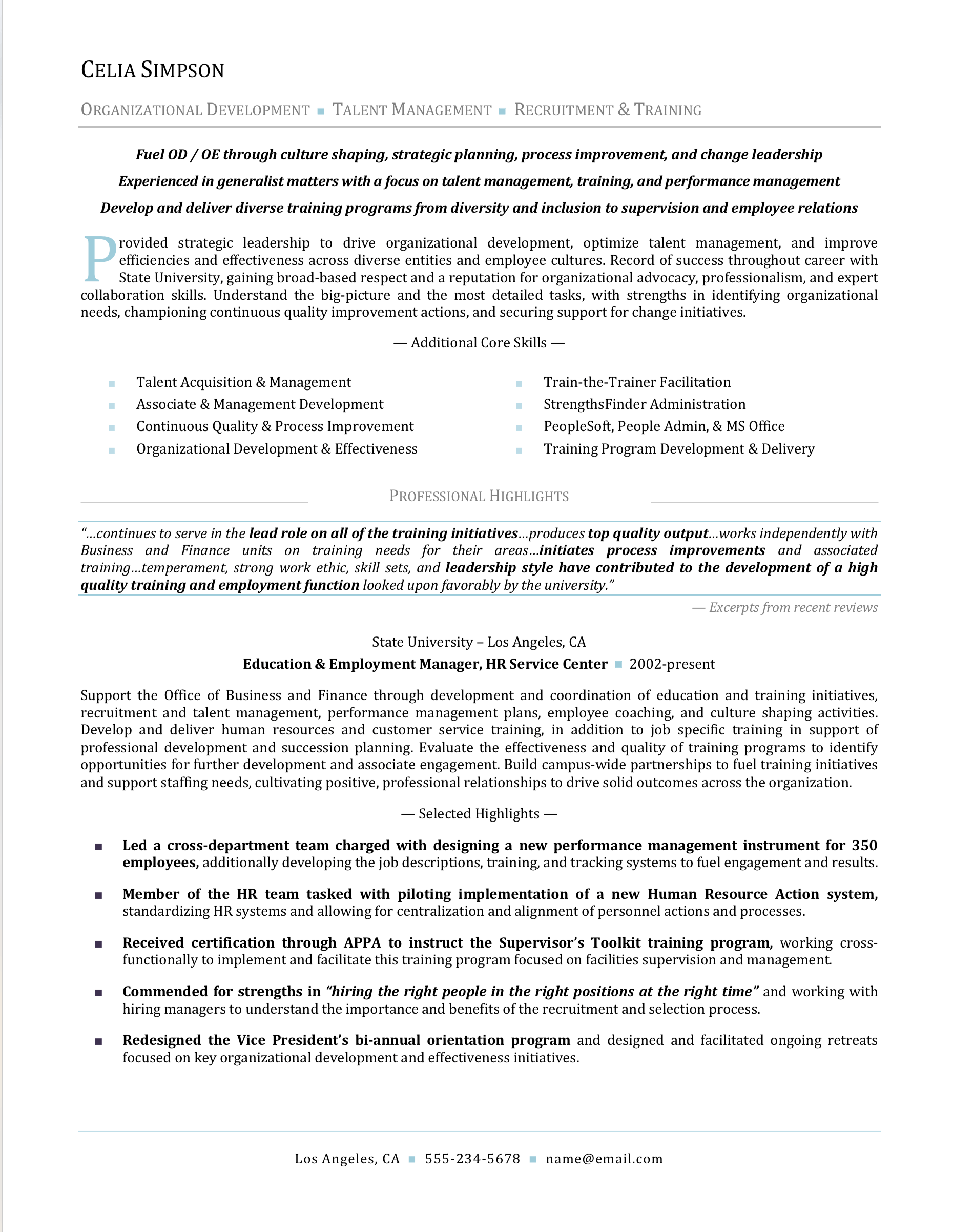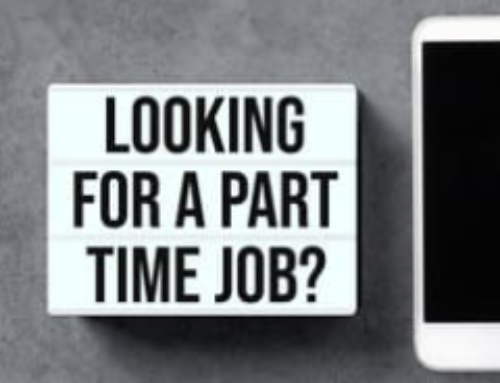Meet Celia…
Celia came to me seeking to transition into an organizational development, talent management, or recruitment role. While she had performed those functions in her prior roles, her titles did not immediately reflect those areas of accountability, so she had created a functional resume to showcase her experience. With this approach resulting in a two-page resume full of bullet points listed under functional subheadings—with work history falling to page two of her resume and including her six career positions since 1982—Celia had a targeted yet ineffective presentation of her career.
The issue…
The number one mistake in resume writing is not creating a targeted picture of your candidacy. Celia had created a very targeted image on paper by presenting her experiences in two key areas: Training and Organizational Development Initiatives and Human Resources; yet, because 30 years of experience were encapsulated in 10 bullet points under these two headings, it made it very difficult for a hiring manager to determine where Celia performed each type of function.
The solution…
Exploring Celia’s career in a more traditional and widely accepted reverse chronological format would result in a stronger presentation of her candidacy. First, incorporating a solid qualifications summary would allow for immediate presentation of Celia’s key experiences and most transferable skills. In addition, a core skills summary was presented to allow for a brief “scan” of Celia’s skill set and confirmation that her background encompassed the experiences which were being sought by her target employers.
Second, a fully developed professional experience section had to be created. To do this, I put the puzzle together—so to speak—going through each of the bullet points on Celia’s original resume and determining when and where each occurred. In addition, Celia and I spent time discussing her contributions—her legacy, if you will, in each of her roles—and how she truly added value in the areas in which she now wanted to transition.
Third, I determined how much experience we needed to present on Celia’s resume. Rarely would one want to present 30 years of experience; unless you are a senior management candidate, a more competitive picture of 10-15 years should be presented. For Celia, dating experiences back to the late 90s instead of 1982 positioned her as “qualified” and not “overqualified.” Earlier experiences were listed in a byline fashion so Celia could use those as talking points during an interview, but dates were omitted prior to her roles in the late 90s.
Fourth, attention was paid to the presentation of the new content on Celia’s resume. Her original resume (shown on www.nolanbranding.com/blog) looked more like a plain text resume, void of formatting and anything engaging. Her new resume (also presented on the ‘Dear Sam’ blog) was created to be visually engaging and create a balanced aesthetic to facilitate ease of readability. Celia’s new resume was a night and day departure from her original functional format and better represented the value she had contributed throughout her career in addition to the value she was positioned to add to her next employer.
Celia’s response…
Celia wrote and stated, “I was extremely pleased with the final product. I believe the resume showcased 30+ years of my career in a strong, positive, and concise manner…it would have been difficult for me to achieve an end product as good as this!”
Sometimes there are reasons to create a functional resume, but rarely should a candidate with high-level experience, such as Celia’s, resort to such a format. With her new resume, Celia is much more likely to engage a hiring manager and secure the types of interviews she is seeking.






